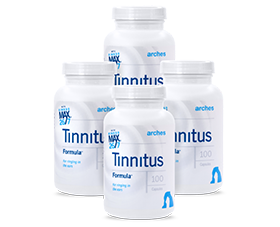Excerpted from The Complete Commission E Monographs: Therapeutic Guide to Herbal Medicine
Ginkgo Biloba Leaf Extract Ginkgo folium
Published July 19, 1994
Editor’s note: The Commission E is an expert panel of physicians and scientists having expertise in herbal medicine and related disciplines. In 1978 the Commission was formed as a division of the German Federal Health Agency to evaluate the safety and efficacy of over 300 herbal medicines sold in German pharmacies. The Commission E is considered the world’s foremost authority on herbal therapies.
Name of Drug
Dry Extract (35-67:1) from Ginkgo biloba L. leaf [Fam. Ginkgoaceae], extracted with acetone/water. Active Ingredient Classification ASK No. 05939.
Composition of Drug
A dry extract from the dried leaf of Ginkgo biloba L. manufactured using acetone/water and subsequent purification steps without addition of concentrates or isolated ingredients. The drug/extract ratio is 35-67:1, on average 50:1.
The extract is characterized by: 22-27 percent flavone glycosides, determined as quercetin and kaempferol, including isorhamnetin (via HPLC) and calculated as flavones with a molar mass of MMr=756.7 (quercetin glycosides) and Mr=740.7 (kaempferol glycosides); 5-7 percent terpene lactones, of which approximately 2.8-3.4 percent consists of ginkgolides A, B and C, as well as approximately 2.6-3.2 percent bilobalide; below 5 ppm ginkgolic acids. The given ranges include manufacturing and analytical variances.
Pharmacological Properties,
Pharmacokinetics, Toxicology
The following pharmacological effects have been established experimentally:
- 1 – Improvement of hypoxic tolerance, particularly in the cerebral tissue.
- 2 – Inhibition of the development of traumatically or toxically induced cerebral edema, and acceleration of its regression.
- 3 – Reduction of retinal edema and of cellular lesions in the retina.
- 4 – Inhibition in age-related reduction of muscarinergic cholinoceptors and adrenoceptors as well as stimulation of choline uptake in the hippocampus.
- 5 – Increased memory performance and learning capacity.
- 6 – Improvement in the compensation of disturbed equilibrium. · Improvement of blood flow, particularly in the region of microcirculation.
- 7 – Improvement of the rheological properties of the blood. · Inactivation of toxic oxygen radicals (flavonoids).
- 8 – Antagonism of the platelet-activating factor/PAF (ginkgolides). · Neuroprotective effect (ginkgolides A and B, bilobalide).
The Pharmacokinetics have been investigated both in animal experiments and in trials involving humans. An absorption rate of 60 percent was found in rats for a radioactively labeled extract (as specified under Composition of Drug). In humans after application of an extract specified as above, absolute bioavailability was 98-100 percent for ginkgolides A, 79-93 percent for ginkgolides B and at least 70 percent for bilobalide.
Both the acute and the chronic toxicity of an extract as specified under Composition of Drug is very low; accordingly, the LD50 in the mouse was 7725 mg/kg body weight after oral application and 1100 mg/kg body weight after intravenous application.
Investigation with this extract as specified above showed no effects which were either mutagenic, carcinogenic or toxic to reproduction. No evaluation was performed on the transferability of the experimental results to extracts other than those investigated.
Clinical Data
1. Uses
(a) For symptomatic treatment of disturbed performance in organic brain syndrome within the regimen of a therapeutic concept in cases of demential syndromes with the following principal symptoms:
- Memory deficits, disturbances in concentration, depressive emotional condition, dizziness, tinnitus and headache.
The primary target groups are dementia syndromes, including primary degenerative dementia, vascular dementia and mixed forms of both.
Note: Prior to starting treatment with ginkgo extract, clarification should be obtained as to whether the pathological symptoms encountered are not based on an underlying disease requiring a specific treatment.
(b) Improvement in pain-free walking distance in peripheral arterial occlusive disease in Stage II of Fontaine (intermittent claudication) in a regimen of physical therapeutic measures, in particular walking exercise.
(c) Vertigo and tinnitus (ringing in the ear) of vascular and involutional origin.
2. Counterindications
Hypersensitivity to Ginkgo biloba preparations.
3. Side Effects
Very seldom stomach or intestinal upsets, headaches or allergic skin reaction.
4. Special Conditions in Use – None known.
5. Use During Pregnancy and Lactation
No restrictions known.
6. Interactions with Other Drugs
None known.(editor’s note: Individuals on prescription blood thinners should consult their physician before taking ginkgo, also thins the blood.)
7. Dosage and Administration
Unless otherwise prescribed:
Daily dosages:
- Indication (a): 120-240 mg native dry extract in 2 or 3 doses.
- Indications (b) and (c): 120-160 mg native dry extract in 2 or 3 doses.
Mode of Administration: In liquid or solid pharmaceutical forms, for oral intake.
Duration of Administration Indication
Indication (a) Length of administration should be judged according to the severity of symptoms and should extend at least 8 weeks in the case of chronic illness. Administration for more than 3 months should be reviewed as to justification for continued administration.
Indication (b) Improvement of ambulatory range requires administration for not less than 6 weeks.
Indication (c) Administration for more than 6-8 weeks has no therapeutic benefit.
8. Overdosage None known.
Get Free Shipping!
Order now and get free shipping on either the Tinnitus Starter Kit or Combo Pack. Try the doctor recommended products with clinically proven ingredients for tinnitus. No coupon code required.

